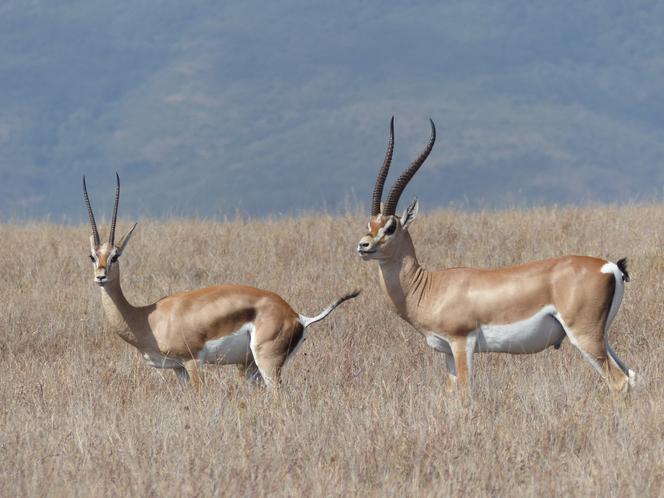


It seems to be almost a given: Male mammals are larger than female mammals. Lions, gorillas, and deer are merely the exemplars of a rule with few exceptions. A new study published in Nature Communications on Wednesday, March 13 has proven otherwise.
Three scientists from Princeton University have just completed a systematic review of the evidence. And while it appears that, in 45% of species, males weigh more than females, 39% of species show no proven size dimorphism. Furthermore, in 16% of cases, the balance of the data is in favor of female size. In other words, among 55% of species, there is no physical superiority of males.
Kaia Tombak and her colleagues undertook this study "a bit by chance," she said: "We wanted to work on species in which males and females had the same size, and we realized that differentiating between monomorphism and dimorphism was very difficult since the measurements seem to have been so arbitrarily made. So we dug deeper." In the process, they discovered a 1977 article by American zoologist Katherine Ralls, who was already starting to dismantle the "larger males" hypothesis. "But it didn't seem to have changed the dominant narrative," Tombak said. "We had to go further."
The team therefore undertook a more detailed study using all the data. First, by adding variance − that is, the numerical distribution of individuals around this average, rather than just the average weights per species. In addition to employing this more rigorous statistical approach, they paid particular attention to the sample selected. Big cats, bears, primates, and ungulates remain in a tiny minority among mammals. The two largest groups by far are rodents and bats. In the former, monomorphism dominates while in the latter, dimorphism in favor of females prevails.
Certainly, elephant seals, whose males are more than three times as large as the females, have no equal. But in the Asian bat Murina peninsularis, females outweigh males by 40%. As for the Madagascar fossa, a cat-like mammal, it has two male morphotypes: one larger than the females, and another the same size. To address the shortcoming, the study selected 429 species representative of the different orders and families.
The question then arose: Why has such an erroneous narrative persisted for so long? Tombak pointed the finger at Charles Darwin. Between his flashes of brilliance, the great naturalist was moved to assert, in The Descent of Man, that sexual competition had led males to develop superior height and weight. It was hard to argue with such a genius. A penchant for iconic mammals, preoccupation with competition among males and deep-rooted anthropocentrism took care of the rest. The infamous "men propose, women dispose" thereby found its animal counterpart in "competitive males, demanding females."
You have 18.28% of this article left to read. The rest is for subscribers only.
